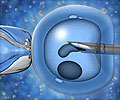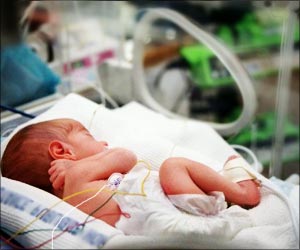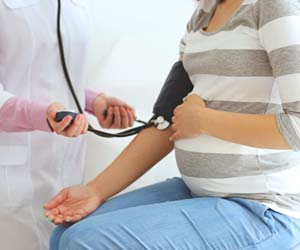New studies show that older women have as good a chance of having a baby under IVF with one embryo as with two and the researchers may eventually help to eradicate the risk of multiple births.
A new research has shown promising development for women in their late 30’s wanting to undergo In-vitro fertilization (IVF). The researchers state that for women over 35 years undergoing IVF could be done so with a single embryo without affecting their chances of conception. They also state that the rates of multiple births like twins or triplets could also be cut down.
The researchers from Finland found that by transferring a single embryo in women aged 36-39 would result in birth just as in younger recipients of the fertility treatment. They explained that it was the quality of the embryo rather than the age of the women that was the most important factor for birth. It is widely hoped that their findings that are published in the journal of human reproduction, might encourage a larger acceptance for single egg transfers and thereby reduce the risks that could be associated with multiple births. It would also thus ensure the chances of the women wanting to have only one child, instead of twins or triplets.According to the Human Fertilisation and Embryology Authority, the common practise in UK is to transfer up to 3 embryos per cycle in women aged 39 or more. And a maximum of two embryos in the woman aged below of 39 years. The researchers focussing their study on 1,224 cycles using fresh embryos and 828 frozen embryo transfers in women aged 36 to 39, found that, in the 36-39 age group, 33% of the women achieved pregnancy after a single-embryo transfer quite similar to the rate in younger women. The birth rate they found was also very similar.
The results for women who underwent more than one cycle of treatment using fresh and frozen embryos, known as the cumulative pregnancy rate were also analysed by the researchers. Hannu Martikainen, of the University of Oulu, and the senior author, said: ‘What we demonstrated for the first time was that the pregnancy rate, and in particular the cumulative pregnancy rate, was very similar in the age group 36 to 39 to that obtained previously in younger women’. Dr Martikainen further explained that this suggests that the quality of the embryo is the most important parameter rather than the age of the women.
The study also found that women had a higher birth rate when they had several cycles with one embryo per cycle rather than cycles with two embryos. When the cumulative rate were analysed, it was found that the single- embryo transfer results were actually better than with double-embryo transfers, with a pregnancy rate of 54% and birth rate of 41.5% in the women having a single- embryo transfer, compared with a pregnancy rate of 35% and birth rate of 26.7% for double-embryo transfers. They also found that the multiple birth rate among the single-embryo transfer group of less than 2%, as compared with nearly 17% in the double embryo group.
Dr Martikainen explained that the study has showed that a single-embryo transfer could be as successful in women up to 40 as it was in younger women and that it would also cut the risk of multiple births compared with double-embryo transfers.






